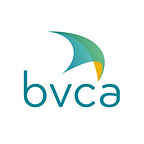Private equity and venture capital can grow the pot for future savers
Retirement is unlikely to be front of mind for a Gen Z’er. Yet, as they take steps into the world of work, their auto-enrolment into a pension scheme will see cash put away to support their twilight years.
If they work in the private sector there’s a high chance they’ll be paying into a default Defined Contribution (DC) pension scheme. With these schemes, the ultimate size of the individual’s final pension pot depends on a) how much that individual pays in and b) where that amount is invested by its manager.
Unfortunately for these Gen Z’ers (and the many others who contribute to DC schemes), their retirements may not be as comfortable as they would hope. A survey from the Association of Consulting Actuaries (ACA) found that “millions of workers in DC schemes are ‘sleep walking’ towards levels of income in retirement in the years ahead that will fall far short,” and that “without a plan for increasing saving levels, the younger generation of taxpayers of tomorrow will face enormous bills.”(1)
Stunted returns
This is partly due to the limitations of what DC managers can and can’t invest in, meaning their savers are, currently, missing out on potentially much higher returns and greater diversification.(2)
Private equity and venture capital funds are, at least for the time being, largely out of bounds for DC scheme investment, despite their returns outstripping those of the public markets. In fact, BVCA research found, collectively, that PE and VC funds managed by its members have outperformed the UK stock market as represented by the FTSE All-Share index every year since 1991(3).
To add to this, a report produced by management consultancy, Oliver Wyman, and the British Business Bank found that retirement savings could be increased by 7–12% for a 22-year-old if their DC pension scheme made 5% of investments in the UK’s fastest growing and most innovative companies(4); the very same companies as supported by private capital.
Barriers to entry
One hurdle to overcome is liquidity — or the ability to shift your pension from one provider to another, and quickly. Unlike with stock markets, where shares change hands every day, selling a private, unlisted business is a much longer process. Further adding to the difficulty is the length of time that private capital firms support businesses for, with investments held for many years.
That could be a problem if you’re nearing retirement and have plans to draw your pension, but those earlier on in their careers should have longer time horizons and should be able to stomach more illiquidity. In fact, with pension pots off limits until 55(5), a 22-year-old could — theoretically — have a percentage of their retirement savings invested for a period spanning the consecutive lifetimes of three average-length private equity funds i.e. around 30 years(6).
Another barrier to entry is the ‘charge cap’ rule, which limits the fees default DC pension schemes can pay when investing (in anything) at 0.75% or less. Performance fees and carried interest are also covered by this cap, even though they are only paid when an investment is growing a pension savers’ pot.
Carried interest contains inherent protections for DC pension savers as it is only paid when there is strong performance over the long term for investors, i.e., them. The BVCA regularly contributes to the Productive Finance Working Group (PFWG) — the Government, Bank of England and FCA-led initiative which aims to develop practical solutions to the barriers to investing in long-term, illiquid assets(7)— to dispel the myths around carried interest in the hope it can help unlock PE and VC investment for future savers.
A known quantity
Removing these barriers to entry would not be an experiment with results unknown. Far from it. In fact, pension schemes around the world that are not subject to the same barriers as UK schemes have been investing in UK PE and VC funds for decades, with objectively great results for savers(8).
Canadian pension schemes are a good example. Just last year, Ontario Teachers’ Pension Plan returned 11% — helped by big gains in private equity and natural resources investments that mitigated losses in its bond portfolio,(9) a great example of the benefits of diversification offered by private capital investments. Australian pension funds are also alive to the benefits of private equity and venture capital investments, with some of the largest building out their own teams to source deals(10). To put a number on it, the BVCA’s Report on Investment Activity 2021 found that 19% of all funds raised that year came from pension funds based overseas.
Making it work
There’s still work to be done to open up the benefits of investment in PE and VC for DC schemes in the UK — but the ball is definitely rolling. The good news is that years of BVCA and broader industry advocacy on this point seems to be paying off. The government recently announced a plan to remove ‘well-designed’ performance fees, hopefully including carried interest, from the charge cap rules.
Along with the growing awareness of the benefits of illiquid assets like PE and VC funds, and the operational solutions being discussed through initiatives like the Productive Finance Working Group, we hope this change will make it easier DC schemes to access high performing private capital funds more easily in the near future, to the benefit of today’s workers.
Martin Senk
Research Manager, BVCA
- https://www.pensionsage.com/pa/Millions-sleepwalking-into-retirement-crisis-as-firms-warn-AE-contributions-are-too-low.php
- https://www.oliverwyman.com/our-expertise/insights/2019/sep/future-defined-contribution-pensions.html
- https://www.bvca.co.uk/media-and-publications/news/bvca-press-releases/details/First-major-UK-analysis-of-its-kind-finds-PE-and-VC-funds-managed-by-BVCA-members-collectively-outperform-FTSE-All-Share-every-year-for-last-three-decades
- https://www.oliverwyman.com/our-expertise/insights/2019/sep/future-defined-contribution-pensions.html
- https://www.moneyhelper.org.uk/en/pensions-and-retirement/taking-your-pension/when-can-i-take-money-from-my-pension
- https://www.investopedia.com/articles/investing/093015/understanding-private-equity-funds-structure.asp
- https://www.bankofengland.co.uk/financial-stability/working-group-on-productive-finance
- https://www.spglobal.com/marketintelligence/en/news-insights/latest-news-headlines/canadian-pension-funds-lead-peers-in-private-equity-investments-69318698
- https://www.bloomberg.com/news/articles/2022-03-14/ontario-teachers-fund-gains-11-1-on-private-equity-resources
- https://www.ft.com/content/9d330ef8-4d1e-4488-83d3-645bc4cff816
